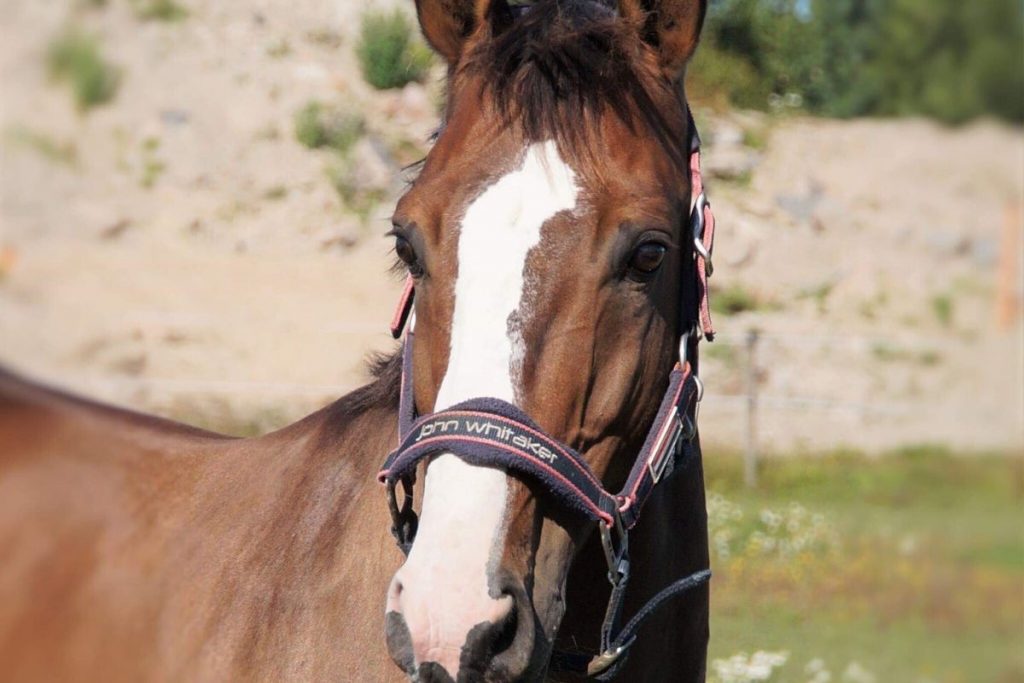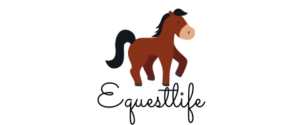When we see water around the eyes, it is very easy to assume that the tears that are being shed are emotional ones.
This is primarily because, we as human beings, cry due to emotional distress brought on by grief and sometimes happiness. However, emotional crying appears to be unique to humans, and while animals do shed tears as a normal function, we do not have concrete evidence that it is due to emotion.
While we know that horses are intelligent creatures that have distinct personalities and thus, often wonder if they shed tears due to emotion, the answer to this is no, they do not openly weep or cry like humans do. This does not mean that they do not shed tears for other reasons though, which we will discuss further.
Do Horses Cry & Do They Have Tears?
As far as we know, horses do not cry but they do have tears. They shed tears when their tear ducts are blocked, have irritants bugging them, or is a direct response to inflammation within the eye.
These tears will run down their faces and make them appear as if they are crying. Please note, that just because horses do not “cry” in the sense that we understand tears to be, this does not mean that they do not feel emotions or do not have “feelings”.

What is the Purpose of a Horse’s Tears & Why Are They Physically Present?
The only difference between a horse’s tears and a human’s is that a horse’s will come from something physical while a human’s can be a result of a physical interaction or from an emotional response. A horse’s tear ducts are completely functional and work in the same way as a human’s. So, why are these tears physically present in horses or generally, what causes them?
- The horse has an eye irritant. This could be an eyelash that has become stuck in the eye, it could be the eye itself (such as being itchy), or it could be any other sort of debris. If your horse always has tears running down, it’s face but has not changed its behavior at all (no sores or lameness) than it may be a blocked tear duct.
- The horse has a blocked tear duct. The main job of a tear duct is to drain any excess tears from the eyes down and through the nose. If the tear duct becomes blocked by debris or biological matter, the tears will collect at the bottom of the duct and will spill over and run down the face constantly.
- What causes a blocked tear duct? Dust,
debris particles in the air, and mucus found in the eye are common reasons.
However, if a horse’s tear duct is physically narrower in its shape, this can
also cause it to become blocked much more quickly.
- How is it fixed? A blocked tear duct can be flushed out with a saline solution. A small tube is used to run through the horse’s nose and up to the end of the duct. This is performed by a certified equine veterinarian and is painless to the horse.
- The horse has an environmental eye irritant. Similar to how an eyelash can get stuck in the eye, environmental irritations can also cause tear shedding. So, things like dust particles, small grains of dirt, fine particles of hay, and even flies can cause constant tear flow. If this is the case for your horse, a simple flushing of the eye will remove it.
- Your horse may have an infection in the eye. Horses can get conjunctivitis in the eye, which is a bacterial infection that will show swelling, tears, irritation, and inflammation in the eye area. If the eye is badly infected, it will often swell shut completely and ooze out mucous as a result. If your horse does have an eye infection, it will be incredibly sensitive to the touch and they may be a bit unnerved if anyone gets close to the eye. Common causes of an eye infection is trauma done to the eye tissues which cascades into a bacterial infection.
- Eye infections can be caused by flies, who are attracted to the moisture within a horse’s eye. When the bacteria that is left behind by the fly gets rubbed into the eyelid membranes, this can cause infection.
- An eye infection can also be caused by windblown dust, which leads the horse to rubbing it in and causing an infection. This can be treated with antibiotic eye ointments which will remove the dust and help treat the swelling.
- General inflammation can also be the culprit but requires you to find the root cause of it.
How to Manage a Horse With a Swollen Eye?
If you notice that your horse has either a swollen eye or swelling around the eye or eyelid, you will need to assess it immediately. Generally, swelling around an eye, on an eyelid, or of the eye means that a traumatic injury has occurred or that your horse has a foreign body within the eye, has been stung by an insect, or has a bacterial infection.
What you need to do is look for evidence
of an injury, look for a foreign body or abnormality, and then report your
findings immediately to your veterinarian. Assess both eyes for symptoms,
record these symptoms down, and contact your vet. If the symptoms seem mile and
the eye generally appears normal, you can call your vet at first available
operating hours, but if the eye seems painful, inflamed, or the issue has come
on suddenly, call during emergency hours.
You may be able to flush your horse’s eye with saline or apply an eye
ointment/drops. It is best to get the green light from your vet before doing
this. Ideally, apply a fly mask to your horse to help keep anything else out
from getting into the eye or near it.
Can I Ride My Horse With A Fly Mask?
When it comes to flies, they require a lot of work just to repel them and protecting your horse from them should be of major priority since they can cause eye irritation, infection, and inflammation.
While you can definitely ride your horse with a fly mask, not every mask will be suitable for the job. Some won’t be comfortable for riding, some won’t allow your horse to see through them, and some won’t fit onto your horse’s bridle properly. With this said, here are some tips to use when finding the proper fly mask.
- Always choose one that is specifically designed for riding.
- Choose a well-made one
that is created out of non-abrasive material that has a soft lining.
- Make sure that it fits your horse’s head properly so that it rests smoothly against their face. It needs to fall at least an inch below your horse’s cheekbone, as this ensures that there is no gap between the mask and the cheekbone.
- The fly mask must have
full clearance around your horse’s eyes. This means that it cannot have any
contact around the eyes, including their eyelashes. Most riding fly masks will
have rounded insets or darts to prevent contact.
- Check over the mask and
make sure that there are no worn or ripped areas and that there are no stray
fibers, meshes, or stickers that can cause a problem. If you see any of these
or any rubs or sores after riding with it, replace it.
- Consider buying a fly mask with ear bonnets if you are in an area where gnats or midges are a problem. Please make note that your horse may not like having their ears covered though.
Other than these, please make sure that the mask is not snugly fit against their face as you want to be able to slip a finger through the mask and your horse’s face, easily. Otherwise, the mask is going to create rubs and sores on sensitive spots of the face.
Always take the fly mask off before your horse goes down for the night, keep it clean, and consider using fly repellant around the face for extra protection.
